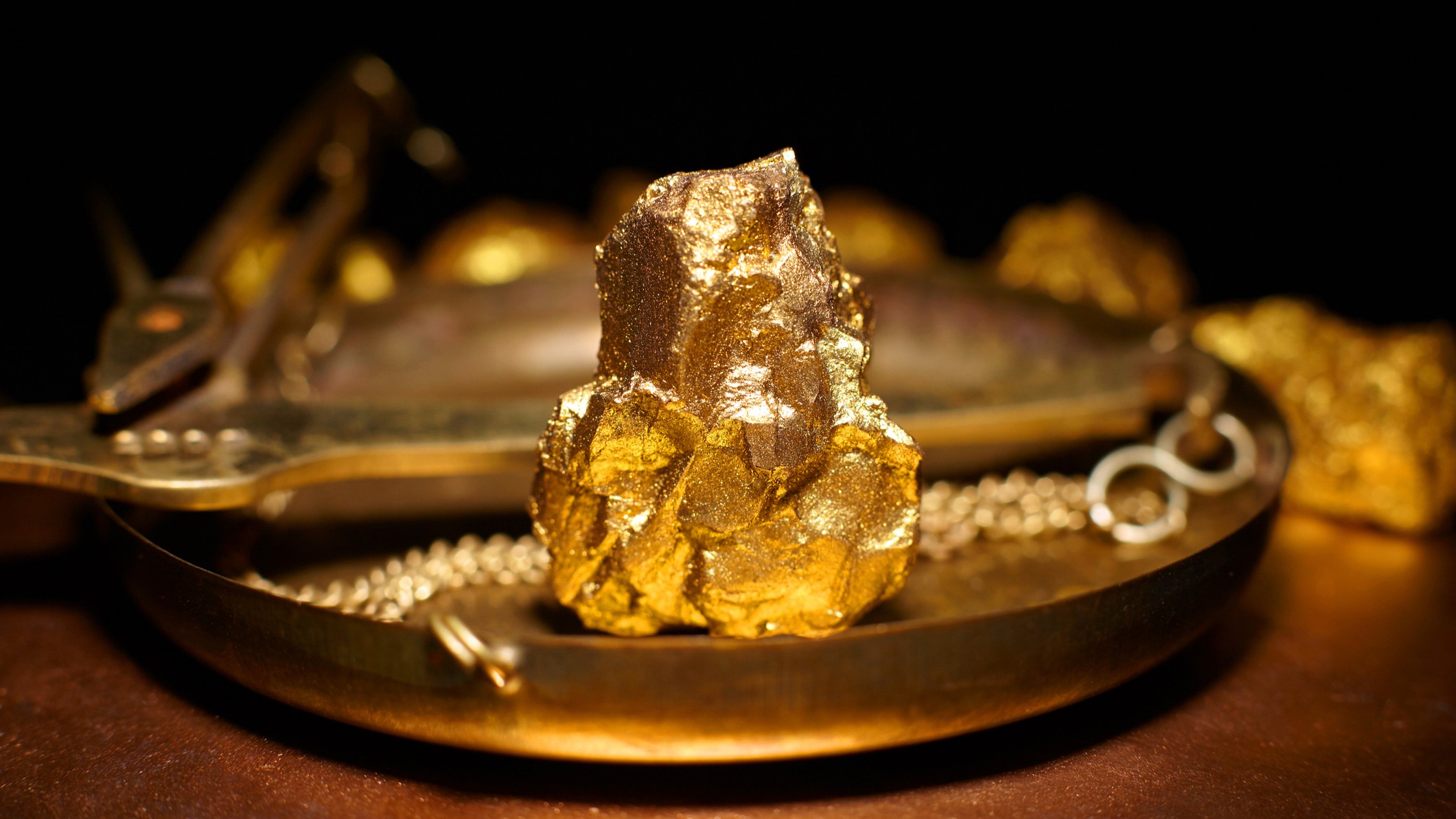
Gold is a heavy metal and one of Earth's rarer elements, formed in space when neutron stars collide. But just how rare is gold on Earth, and how much of it is there in the world now?
To answer these questions, it is easiest to start with the amount of gold that humans have mined to date. The U.S. Geological Survey (USGS) estimates that throughout history, humans have extracted about 206,000 tons (187,000 metric tons) of gold from rocks and rivers, with much of the gold mined and produced today used to make jewelry.
This estimate is significantly smaller than the one given by the World Gold Council, which states that 238,391 tons (216,265 metric tons) of gold has been mined to date — an amount that would fit in a cube measuring approximately 72 feet (22 meters) on each side. About 45% of this gold has been used to craft jewelry, 22% is kept in collections as gold bars and coins, and 17% is stored in central banks, the council notes.
Humans have mined a sizable proportion of the gold that can be economically extracted from Earth's crust, but there are still reserves left. In the most recent USGS Mineral Commodity Summaries report for gold, the agency found that there are roughly 70,550 tons (64,000 metric tons) of gold still sitting in economically viable deposits worldwide. The countries with the largest untapped gold reserves are Russia, Australia and South Africa, the report indicated, but China extracted and brought more gold to market than any other country in 2024.
Experts distinguish between reserves, or the portions of an ore deposit that can be economically extracted, and resources, which are ore deposits that researchers and companies have less geological knowledge about and confidence in. According to the World Gold Council, which pulls its data from the research consultancy Metals Focus, global gold reserves amount to 60,370 tons (54,770 metric tons), while gold resources are estimated to weigh about 145,626 tons (132,110 metric tons).
Related: Why is gold so soft?
Taken together, the USGS and World Gold Council estimates suggest there are between 277,000 and 299,000 tons (251,000 to 271,000 metric tons) of gold in human objects and known crustal deposits. But there is much uncertainty in that number.
What's more, most of the gold on Earth is not in concentrated deposits or circulating above ground. Tiny flecks and nuggets of gold that aren't worth extracting occur throughout the crust, and such particles are especially widespread in seawater and igneous rocks, according to the University of California, Berkeley. The concentration of gold in Earth's crust is about 4 parts per billion, or 0.004 grams per metric ton, so all the particles in the crust put together likely weigh around 441 million tons (400 million metric tons), according to The Royal Mint.
If that sounds like a lot of gold, it's still only a fraction of what the planet actually holds, according to experts. The amount of gold in Earth's crust is dwarfed by the amount locked away in the planet's core, which geologists say holds 99% of the world's gold — enough to coat the planet in a layer 1.6 feet (0.5 m) thick.

When Earth formed, most of the gold that was available sank into the planet's core due to its density, Chris Voisey, an ore deposit geologist and research fellow at Monash University in Australia, told Live Science in an email.
"Consider that 99.5% of the Earth's mass formed when things were molten and could differentiate based on density (so, gold would sink to the core)," Voisey said. The remaining 0.5% landed later on the planet during the "Late Heavy Bombardment," a period between 4.1 billion and 3.8 billion years ago when Earth was violently pummeled by meteorites. That 0.5% holds the gold that geologists and resource explorers find in rocks and concentrated as ore deposits today, Voisey said.
The gold in this tiny fraction of Earth's mass did not sink into the core because the planet had already formed a solid crust when it reached the planet, Voisey said. "A lot of Earth's precious metals that form ore deposits is believed to be sourced from this event, since it isn't locked in the iron-nickel core," he said.
Since the Late Heavy Bombardment, the amount of gold on Earth has not changed much with inputs from space. Deliveries of gold via meteorites are "more or less negligible," Voisey said, and gold that is already on Earth "is simply shuffled around by geological processes which can form ore deposits."
Given that so much of Earth's gold is in the core and that concentrations are so variable in the crust, Voisey said he "seriously doubts" that researchers could ever accurately measure all the gold on the planet. It would also be "impossible" to determine exactly how much gold humans haven't discovered yet, he said.







